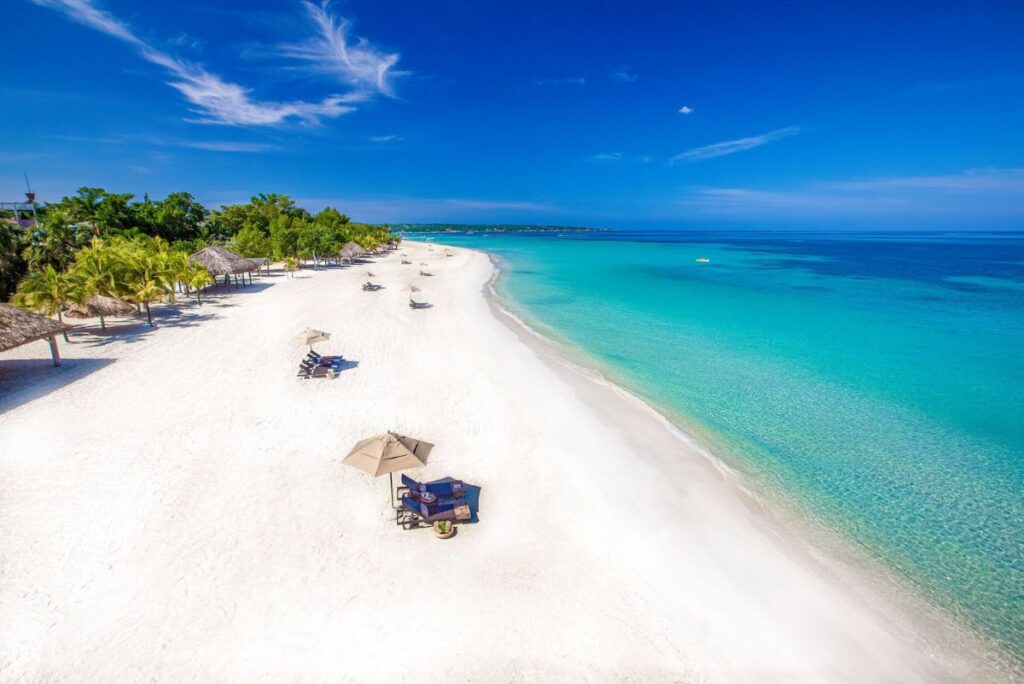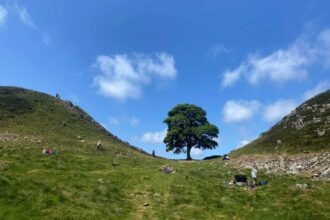Jamaica, an island gem in the heart of the Caribbean, has long been celebrated for its captivating beauty, especially its pristine white sand beaches. These stretches of sand, kissed by azure waters and dappled with the shadows of swaying palm trees, are not just magnets for tourists from around the globe but are also deep-rooted in the very ethos of Jamaican culture and lifestyle.
- The Allure of The Jamaica’s White Sand Beaches
- Private Resorts and Their Beaches
- A Question of Rights: Beach Access in Jamaica
- Development and Its Impact
- Special Events: A Double-Edged Sword
- Conservation: Protecting Jamaica’s Natural Treasures
- The Local Perspective: Voices from Jamaica
- The Way Forward: Balancing Tourism and Local Access
- Reimagining Jamaica’s White Sands
For the locals, these beaches are more than just picturesque destinations; they are spaces of congregation, celebration, and relaxation.
Hufan Farah
Yet, a pressing concern arises when one delves deeper into the dynamics of beach access: Are these iconic shores equally accessible to both tourists and the native Jamaicans? This question sets the stage for a comprehensive exploration of Jamaica’s white sands, their allure, and the underlying complexities of access and ownership.
The Allure of The Jamaica’s White Sand Beaches
Beyond their obvious visual appeal, Jamaica’s white sand beaches hold a magnetic charm that’s hard to define. Each grain of sand tells a story – from the geological processes that birthed them to the footprints of history left by the many cultures that have touched Jamaica’s shores. The rhythmic sound of waves crashing against the shores beckons travelers, poets, and dreamers alike.

For the adventurer, these beaches promise untold treasures beneath their waters, rich coral reefs, and vibrant marine life. For the historian and cultural enthusiast, they offer glimpses into the past – from tales of the Tainos, the island’s indigenous inhabitants, to remnants of European colonization. Yet, amid this multifaceted allure, a tension persists concerning who gets to experience these natural wonders up close and who remains at a distance.
Private Resorts and Their Beaches
At the heart of the island’s touristic charm lies a sprawling array of private resorts and exclusive properties, many of which command significant portions of the beachfront real estate. These establishments, with their luxurious amenities and tailored experiences, cater predominantly to international tourists seeking a slice of Caribbean paradise. Enclosed within their walls, these beaches take on an atmosphere of seclusion and opulence, offering an unparalleled level of comfort and privacy. Yet, this exclusivity often comes with a caveat. For many locals, these gated paradises symbolize areas that are out of bounds, places where the sand beneath one’s feet is not a given right but a premium privilege. This dynamic creates a dichotomy, contrasting the welcoming warmth of Jamaican hospitality with the selectiveness of beach access, leading to deeper questions about land use, heritage, and entitlement.

A Question of Rights: Beach Access in Jamaica
Navigating the waters of legal rights and public access in Jamaica is a complex endeavor. Historically, the island’s laws have emphasized the public’s right to enjoy the natural beauty of its coastlines. The essence of these laws mirrors the Caribbean spirit, where the sea and sand are perceived as collective treasures rather than individual possessions. However, as time has evolved, the clash between public rights and private ownership has intensified. The crux of the matter doesn’t solely revolve around the beach itself but the pathways leading to it. While the coastline remains public, the routes to access these pristine stretches can be privately owned, resulting in a labyrinth of legal nuances. The consequence is a landscape where the very act of setting foot on a beach might be unhindered, but the journey to get there is riddled with barriers. This situation pushes to the forefront a compelling dialogue about shared spaces, ownership, and the very essence of freedom in enjoying natural wonders.
Development and Its Impact
The evolving silhouette of Jamaica’s coastline bears witness to the march of progress and the ever-growing footprint of human development. While on one hand, urbanization and infrastructural advancements promise better amenities, more jobs, and enhanced tourism appeal, they also usher in debates about environmental ethics and cultural preservation. Every brick laid, every resort constructed, and every commercial project initiated can transform the natural topography, occasionally shadowing the once unspoiled beauty. These developments, while crucial for economic growth, can sometimes alienate those who remember a different version of their homeland – one less touched by commercialism. Beyond mere access, it’s a conversation about memory, change, and the sacrifices made in the name of progress.
Special Events: A Double-Edged Sword
Jamaica’s beaches, with their cinematic beauty, have often served as the backdrop for myriad events, from vibrant local festivals to grand international galas. While these events can spotlight Jamaican culture, drawing attention and revenue, they also momentarily transform public spaces into ticketed venues. For the local artisan, such events might mean a chance to showcase their craft to a broader audience; but for the everyday Jamaican, it might signify a day when their favorite relaxation spot is off-limits. It’s a dance between celebration and seclusion, where the lines between public good and private gain often blur.
Conservation: Protecting Jamaica’s Natural Treasures
Jamaica’s ecological tapestry, woven with diverse flora and fauna, extends beyond its lush rainforests to the very beaches we discuss. Conservation efforts, driven by a commitment to safeguard this biodiversity, sometimes require tough choices. Restricting access to particular beaches during specific seasons, for instance, could ensure the survival of endangered species or the flourishing of fragile ecosystems. For the environmentalist, these measures are non-negotiable, a duty to the future. Yet, for the local fisherman or the family seeking a weekend outing, it’s a reminder that nature, while bounteous, is also delicate and demands respect and understanding from all its beneficiaries.
The Local Perspective: Voices from Jamaica
Within the heartbeat of reggae, the aroma of jerk spices, and the tales passed down through generations, lies the real essence of Jamaica. The perspectives of its people, diverse and profound, paint a picture far more intricate than what meets the tourist’s eye. For some, the beaches are reminiscent of childhood adventures and ancestral stories, while for others, they’re a means of livelihood. Diving deep into these narratives reveals a tapestry of emotions, from pride and joy to concerns and hopes for the future. To truly grasp the dynamics of beach access, one must lend an ear to these voices, for they hold the key to understanding and harmony.
The Way Forward: Balancing Tourism and Local Access
The confluence of economic aspirations and the preservation of cultural identity presents Jamaica with both a challenge and an opportunity. While tourism, with its economic dividends, cannot be sidelined, the soul of Jamaica—its people and their rights—remains paramount. The path ahead demands innovative solutions that not only promote tourism but also ensure that every Jamaican feels a sense of belonging and ownership towards their natural treasures. It’s a quest for equilibrium, where the melodies of commerce and community sing in harmony.

Reimagining Jamaica’s White Sands
In the shifting sands of time, Jamaica’s beaches have witnessed histories, stories, and evolutions. Today, as we stand at the crossroads of change and tradition, the call is to reimagine these shores in a manner that honors both the past and the future. The dream is of beaches that echo with the laughter of both tourists and locals, where every footprint, whether from near or far, finds its rightful place in the sands of time.


















